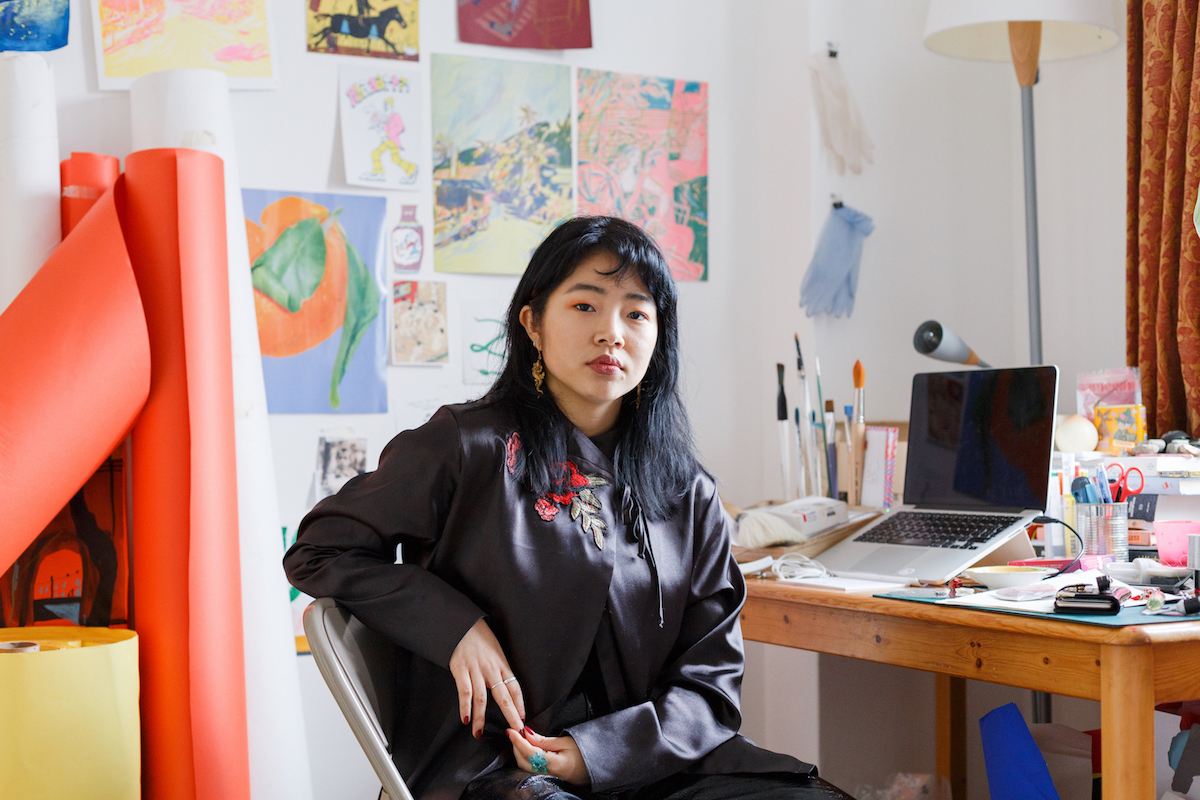G-IRL
Joey Yu


Expression, curiosity and ambience is at the centre of Joey Yu’s illustrations. Her practice is an autobiographical reflection of the busy world around her and although she’s at the dawn of a bright future, she has already worked with some big name clients include The New York Times, ASOS and The British Council. She’s also an animator and a curator and has recently put on shows at the ICA and Tate. If you’re familiar with Joey’s illustrations, you’ll understand why her vividly tender work has gained so much traction. Her style is distinctive to her experience, identity and her unique influences range from short stories to Asian graphics. She’s full of spirit and virtuosity and like many exciting illustrators working today, Joey is an absorber of her environment and a storyteller at heart. The most noteworthy thing about Joey is that she doesn’t limit herself. Her willingness to place herself into unknown fields, aesthetics and spaces is a refreshing reminder of why artists should never be pigeonholed. As big fans of her work, we visited Joey’s colourful home studio to discuss her love of fashion and fiction, whether art school prepares you for the real world and why it’s possible to create your own opportunities by believing in yourself and being persistent.
What do you think makes illustration such an important medium?
It’s something that we’re exposed to all the time and it’s one of the most accessible art mediums for people to engage with. Anyone can enjoy illustration and it’s a language anyone can understand. It transcends words. I’ve received messages in lots of different languages. I love the fact that people can relate to an image and that it resonates with them. They can find their own story within a picture.
It’s universally understood. Also, it feels like illustration is being used to help further discussions around sexism and racism which is quite a powerful thing…
Yes. I don’t necessarily make straightforward political work and I’m not directly trying to convey certain messages but I think the fact that I am a female making the same work a man might get recognition for is a message in itself. There are so many male illustrators that are prominent in the industry compared to the number of females studying it. I think we should question why the numbers seem to flip round after education.
Where does your style come from?
I have a lot of different reference points. I’m a big collector of graphic imagery. For example, I have this regular physics school book but the cover is so stylish and the the way it feels is really lux. I also like travelling and seeing the visual language of different places. I think one of the best places to look for inspiration is in a supermarket. You look at all of the packaging and see the way each country employs certain graphic elements in their products. That is something that really inspires me. The colours of a place.
Where have you been that has really stood out?
My trip to Seoul was really inspiring and also Malaysia. I think Asia in general just has the weirdest ideas! I think their graphic language has expanded whereas if you look at the visuals in UK or US magazines, people aren’t really that boundary pushing in mainstream media. I feel like it’s become very simplified recently. In Asia, it seems like there are still loads of crazy weird ideas.
Do you think there’s more experimentalism there?
Yes and it’s really exciting. If you watch TV shows there, they’ll just throw in a random graphic! There is a lot more playfulness in terms of editing and how things are filmed and composed. In the UK. There’s not too much going on. I was in Malaysia watching this show that had a lurid blue ticker running across the screen and when someone shouted, their head expanded. I was thinking – imagine that happening on a documentary in the UK! There are exceptions but I think most of the experimental stuff has migrated online. I think Kyra TV are a great example of UK video producers making exciting content.
How does your heritage influence your work?
A lot of things I draw are autobiographical. It’s my life as I live it. I’m essentially telling my story. There’s a lot of things that you can pick out and see a my heritage in there, but I never had that growing up. It was always such a predominantly male and western viewpoint. Seeing something different would have been great for me to look up to.